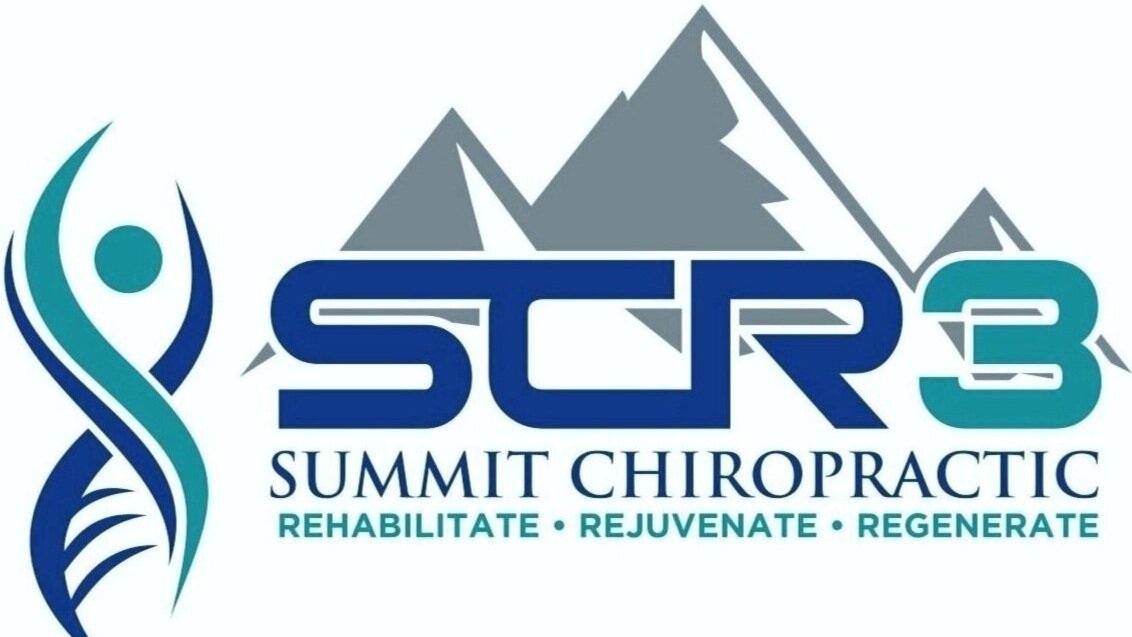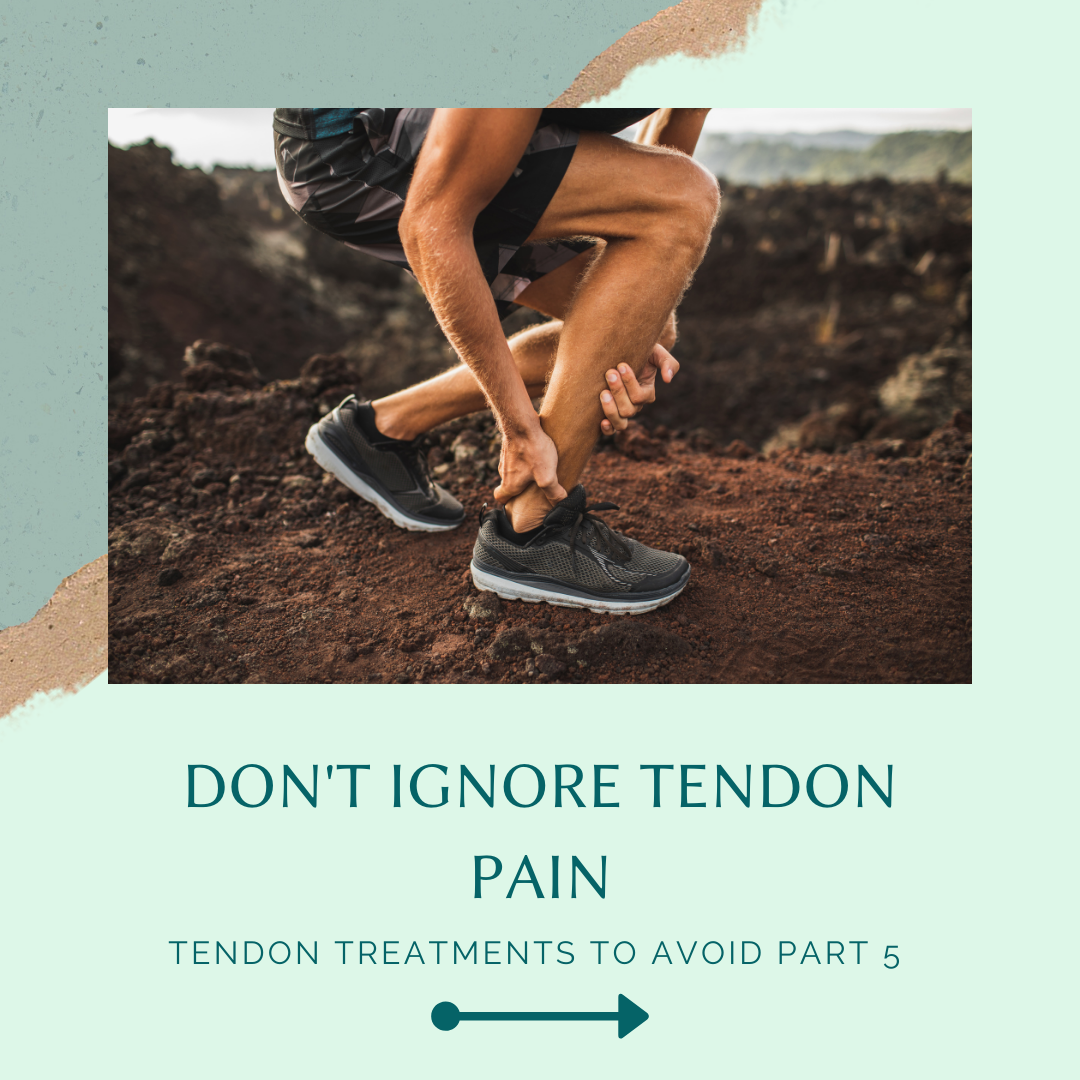10 Treatments to Avoid with Tendon Pain
It is important that we do the right things in tendon rehabilitation. This blog post discusses some of the things to avoid when treating tendons or having your tendons treated. I have personally experienced tendon pain in both of my Achilles during my time as a collegiate runner at Adams State University, and I definitely wish I had known a lot of this information at the time. Now I am glad to have the opportunity to share it with you all!
Tendon Treatments to Avoid Part 1: Complete Rest
Let’s clarify complete rest first. Complete rest is fully unloading a tendon or immobilizing it so that it no longer experiences any loads whatsoever. Over time, complete rest actually decreases the stiffness in the tendon, as well as decreases the strength and size of the muscle that connects with it. We may mistakenly take the initial decrease in pain as a good sign of healing, unfortunately once we try to return to normal load and activities, the pain comes back as well. The initial stage of tendon rehab is typically a modification of both loads as well as activities, not totally stopping them all together. The best treatment for tendon pathology and pain is to begin incorporating the right kinds of loads so that we can increase the capacity of both the healthy portions of the tendons, as well as the muscles that connect to them.
Tendon Treatments to Avoid Part 2: Incorrect Exercise
It is important to prescribe the correct types of load when rehabilitating tendons. The types of loads that can commonly cause tendon pain are high intensity dynamic loads, which is why athletes such as runners, jumpers, and gymnasts have higher rates of tendinopathy than powerlifters and athletes that use more higher loads, at a slower rate. One of the ways we have to modify activities is that we need to begin incorporating heavy, slow loads, and initially avoid the loads that may have brought about the tendon changes. If you are consistently experiencing a recurrence in your tendon pain, it is likely that you are using incorrect loads for your rehab. Start doing the correct type of loads consistently, and over time the tendon and muscle will adapt to increase your load tolerance as you get back to normal activities.
Tendon treatments to avoid part 3: passive treatments
In tendon pain, passive treatment = short term benefit without long term gain. Treatments like rest, compression, elevation, as well as electrical and other modalities can sometimes decrease pain in the short term. However, there is not a long term benefit to the capacity of the connective tissues. In order to increase the capacity and health of the tissues long term, we have to give them the proper stimulus in the form of a loading program.
Tendon treatments to avoid part 4: Injections
A treatment that used to be quite commonplace for tendon pain was injection of corticosteroid medication. This was especially prevalent back when we really thought that inflammation was the big factor in the development and chronification of tendon pain, however this is not the case. Injecting steroids into tendons may seem like a good idea at first, but this does nothing for benefiting the structure of the tendon, nor does it produce long lasting changes in tendon capacity. Sometimes injections can have a short term benefit in reducing pain, but over time, and especially if injections are repeated, these therapies can degrade the structure of the tendon and potentially make it more susceptible to rupture. The best treatment for chronic tendon pain is going to be a consistently followed loading program. Injection therapy should not even be considered until multiple months of conservative management and loading have failed.
Tendon treatments to avoid part 5: Ignoring tendon pain
Have you been trying the same treatments over and over for your tendon pain and now just ignore it? Often times pain can be a centrally mediated phenomenon, meaning that the amount of pain we are in are due to processes occurring in our brain and spinal cord. This has to be true because we are able to alter our amount of pain, as well as our functional capacity, long before we are able to alter the actual structure of our tendons. Proper loading strategies change muscle activity, as well as pain activity, both of which are also centrally mediated. With a consistent and well executed loading strategy, we can work on slowly decreasing pain and increasing your function.
Tendon treatments to avoid part 6: Stretching Tendons
When we have tight and uncomfortable tendons, it may seem like a good idea to stretch them out, but this isn’t necessarily the case. As explained in the video, stretching tendons like the achilles and hamstring can create compressive loads on the tendon, which is one of the ways we develop tendon pain in the first place. Creating compressive loads on tendons can exacerbate and worsen our tendon pain. Passive stretching does not actively load the tendon to create lasting change. We want to load these tendons, which will actually do more in elongating the tendon and increasing its elasticity in the long run…. (pun intended)
Tendon treatments to avoid part 6: stretching tendons
When we have tight and uncomfortable tendons, it may seem like a good idea to stretch them out, but this isn’t necessarily the case. As explained in the video, stretching tendons like the achilles and hamstring can create compressive loads on the tendon, which is one of the ways we develop tendon pain in the first place. Creating compressive loads on tendons can exacerbate and worsen our tendon pain. Passive stretching does not actively load the tendon to create lasting change. We want to load these tendons, which will actually do more in elongating the tendon and increasing its elasticity in the long run…. (pun intended)
Tendon tx to avoid: part 7: cross friction massage
Let’s clarify again here, we are referring to cross friction or “deep tissue” directly on a tendon. This kind of therapy can actually irritate the tendon or the synovial sheath that surrounds it, which will bring the tendon back into a more reactive state. Sometimes the muscle up the chain can become tight and sore, in which case massage and manual therapies can be beneficial when applied to the muscle. There is sometimes a short term benefit in decreasing pain, but long term we want to load and increase the capacity of the tendon.
Tendon tx to avoid part 8: Using Images to Assess Outcomes
While imaging can sometimes be useful in diagnosing tendon pathology, we have to recognize the images are only a part of the whole picture (pun intended) in tendon pathology. Once tendon pathology is visible on imaging, it is very difficult to change the structure back to normal. However, this does not mean that we can’t return to being fully functional. What we do know is that the vast majority of individuals with tendon pathology still have enough good tendon to be fully functional and meet their goals. What this means is that we shouldn’t focus on changing the altered portions of the tendon, but focus on increasing the capacity of the healthy portions of the tendons.
Tendon tx to avoid part 9: worrying about rupture
It makes a lot of sense to worry about painful structures breaking, but in the case of tendons, it is not something we should spend a whole lot of time worrying about. In fact one of the first loading programs was actually performed as a patient was actively attempting to rupture their own achilles! This patient had debilitating achilles tendon pain, and their doctor refused to do surgery because the tendon was not ruptured. So this patient attempted to rupture their own achilles by performing repeated heel drops. To their surprise they did not rupture their achilles, but they actually started having less pain! This was the first loading program ever used in treating tendon pain and is now recognized as the best practice model in treating tendons (especially after refining the loading programs based on athlete needs).
Tendon tx to avoid pt 10: rushing rehab
I personally have dealt with tendon pain and pathology in the past and I can tell you it is a slow process in getting back to “normal.” If someone tells you they did something or had some treatment and it was gone the next day, to be honest they probably weren’t experiencing true tendon pathology. Coming back from tendon injury is a bit of a journey, one that requires persistence and diligence with a loading program. Some of the best researchers on tendon pathology suggest that it can typically take approximately 6-8 months to return to full capacity. To some that may sound like a crushing blow, but that is just the reality of the matter.We have to recognize that gimmick treatments and quick fixes are not the best answer to tendon pain. Now during that time period, we will be loading the tendon and using sound programming to manage loads properly, and in most cases sport activities can be resumed much earlier than 6-8 months. The important thing to know is that it is not a fast process, but it is a process that you have to trust in order to get back to a full, or maybe even better capacity.
Dr. Nic Hedges DC, MS
Dr. Nic is a 2019 graduate of Logan University in St Louis MO. While pursuing his doctorate in chiropractic, he also enrolled in, and received, a concurrent master's degree program in sports science and rehabilitation. While in school…. Click on the photo for more about Dr. Nic!






